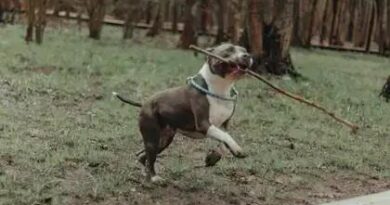What is in-the-field dog training
Understanding In-the-Field Dog Training
In-the-field dog training refers to the practice of training dogs in real-world environments rather than in controlled settings like training schools or backyards. This method emphasizes practical skills and behaviors that dogs will need in everyday situations, such as walking on a leash, responding to commands amidst distractions, and interacting with other animals and people. By exposing dogs to various stimuli, trainers can assess their reactions and adjust their training techniques accordingly.
The Importance of Real-World Experience
One of the key benefits of in-the-field dog training is that it provides dogs with real-world experiences that are crucial for their development. Dogs learn to navigate different terrains, sounds, and smells, which helps them become more adaptable and confident. This exposure is essential for breeds that are typically used for specific tasks, such as hunting, herding, or service work, as it prepares them for the challenges they may face in their roles.
Techniques Used in In-the-Field Training
In-the-field dog training employs a variety of techniques tailored to the dog’s needs and the environment. Trainers often use positive reinforcement methods, such as treats and praise, to encourage desired behaviors. Additionally, they may incorporate clicker training, where a click sound marks the exact moment a dog performs the desired action, helping to reinforce learning. These techniques are particularly effective in dynamic settings where distractions abound.
Challenges of In-the-Field Training
While in-the-field dog training offers numerous advantages, it also presents unique challenges. Trainers must be prepared to handle unexpected situations, such as aggressive dogs, loud noises, or sudden changes in weather. Furthermore, the presence of distractions can make it difficult for dogs to focus, requiring trainers to be patient and adaptable. Proper planning and a thorough understanding of canine behavior are essential for overcoming these obstacles.
Choosing the Right Environment
Selecting the appropriate environment for in-the-field dog training is crucial for success. Trainers should consider locations that provide a variety of stimuli without overwhelming the dog. Parks, urban areas, and nature trails can offer diverse experiences, but trainers must ensure that the setting is safe and suitable for the dog’s skill level. Gradually increasing the complexity of the environment can help dogs build confidence and improve their training outcomes.
Benefits for Dog Owners
In-the-field dog training not only benefits the dogs but also enhances the experience for dog owners. By participating in training sessions, owners can learn more about their dog’s behavior and needs, fostering a stronger bond between them. This method encourages owners to be more engaged in their dog’s development, leading to better communication and understanding. Ultimately, this collaborative approach can result in a well-behaved and happy pet.
Socialization Through In-the-Field Training
Socialization is a critical aspect of in-the-field dog training. Exposing dogs to various people, animals, and environments helps them develop appropriate social skills and reduces the likelihood of behavioral issues. Trainers often incorporate group sessions where dogs can interact with one another, promoting positive behaviors and reducing fear or aggression. This socialization process is vital for puppies but is equally important for adult dogs.
Measuring Progress in In-the-Field Training
Tracking progress in in-the-field dog training can be challenging due to the variable nature of real-world environments. Trainers often use specific benchmarks to evaluate a dog’s performance, such as the ability to follow commands amidst distractions or the dog’s overall confidence in new situations. Regular assessments and adjustments to training plans are essential to ensure that the dog continues to improve and develop the necessary skills.
Finding a Qualified Trainer
When considering in-the-field dog training, it’s essential to find a qualified trainer with experience in this specific method. Look for trainers who use positive reinforcement techniques and have a solid understanding of canine behavior. Reading reviews, asking for recommendations, and observing training sessions can help dog owners make informed decisions. A skilled trainer will not only teach the dog but also empower the owner with the knowledge and tools needed for continued success.



